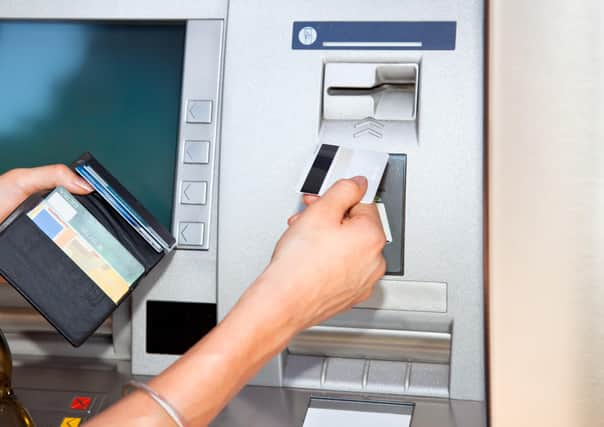ATM keypads and the risks of spreading the coronavirus


As a microbiologist interested in the transmission of infection, I have spent a lot of time worrying about how SARS-Cov-2 continues to circulate despite the “lock-down”.
In general, respiratory viruses can be spread by aerosols, tiny particles which remain suspended in the air and infect people very easily in enclosed spaces.
Advertisement
Hide AdAdvertisement
Hide AdExamples of very infectious viruses transmitted like this include measles, mumps and ‘flu.
However, common cold viruses are transmitted mainly by contamination of the environment with secretions loaded with virus from the nose or mouth.
When a contaminated item is touched by someone else, the virus can be transferred into their nose or mouth and cause an infection.
We do not know which route is the more important for SARS-Cov-2.
Advertisement
Hide AdAdvertisement
Hide AdHowever, we do know from the entry of SARS-1 coronavirus into Hong Kong in 2003, that highly effective transmission can occur via lift buttons. By extension, numeric keypads and touchscreens are highly likely to be a potential risk.
People go shopping and use ATMs. The virus survives for hours or days.
We cannot stop people touching ATMs and other numeric keypads, touchscreens, door handles, hand rails and so on, but we can protect them against infecting themselves with the virus by cleaning their fingers.
This chain of infection can be broken simply by hand cleansing using alcohol gel (or rubbing alcohol or methylated spirits) immediately after touching a common-use item.
Advertisement
Hide AdAdvertisement
Hide AdBecause I am worried about the possibility of transmission by touch, I wrote to the banks and building societies in Eastbourne on April 30, asking if they would put a simple warning on their ATMs and, furthermore, forward that message to their head offices.
By May 4, it seems that this potentially important opportunity to block the transmission of infection of SARS-Cov-2 to protect the people of Eastbourne had been ignored.
Could electronic devices in banks and shops be inadvertently spreading the virus?
Even better than a notice would be a message on the ATM screen which could warn people of the risk when they inserted their cards.